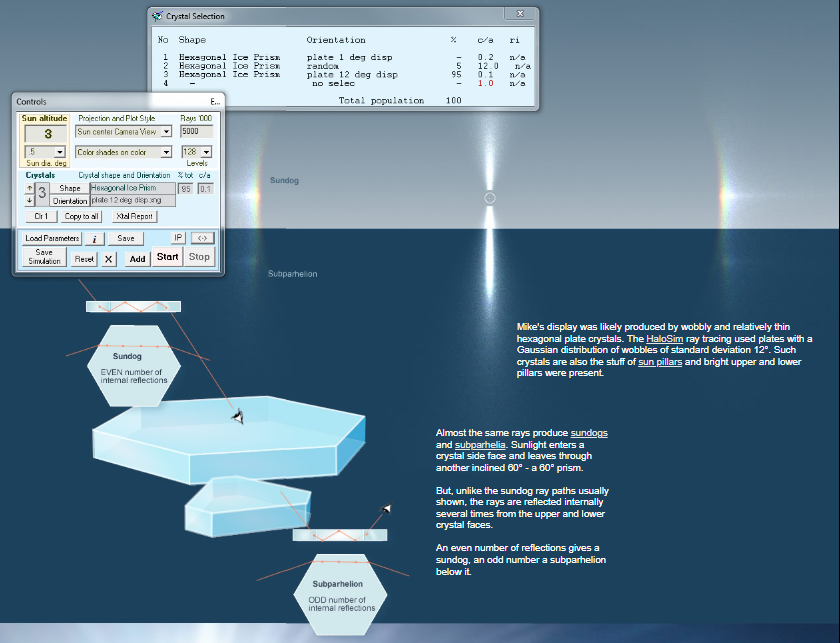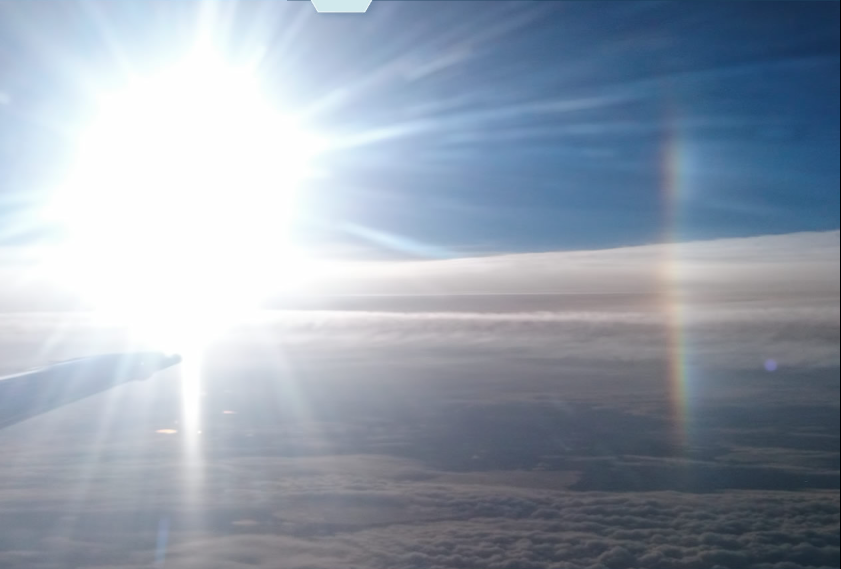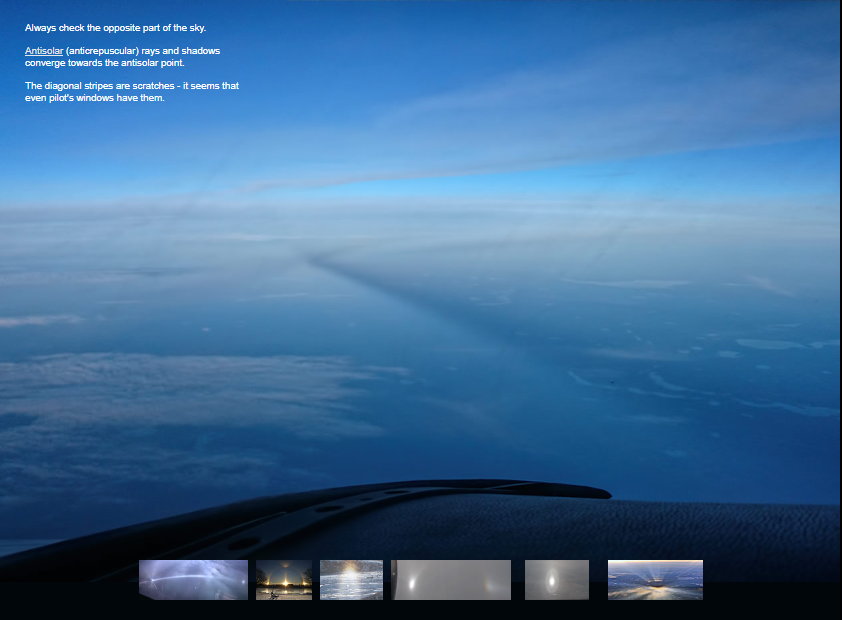Subhorizon arcs, Alberta, Canada - OPOD
Subhorizon Arcs, Alberta, Canada - OPOD
Subhorizon arcs are a fascinating atmospheric optical phenomenon that can be observed in various parts of the world, including Alberta, Canada. These arcs are characterized by their position below the horizon and their unique appearance. In this article, we will delve into the details of subhorizon arcs and explore their formation, characteristics, and significance.
A Display of Subhorizon Arcs
The images captured by Michael Plouffe (mpaviation) at an altitude of 39,000ft over Alberta, Canada, provide a stunning visual representation of subhorizon arcs. These images showcase sundogs and subparhelia, which are produced by wobbly and relatively thin hexagonal plate crystals. The presence of bright upper and lower pillars further adds to the beauty of the display.
Understanding the Formation of Subhorizon Arcs
To comprehend the formation of subhorizon arcs, it is essential to examine the path of sunlight through these crystal structures. Unlike the typical ray paths associated with sundogs, the rays in subhorizon arcs undergo multiple internal reflections from the upper and lower crystal faces. An even number of reflections results in the formation of a sundog, while an odd number gives rise to a subparhelion positioned below it.
Exploring Additional Atmospheric Optical Phenomena
While observing subhorizon arcs, it is always worth checking the opposite part of the sky. This is because other intriguing atmospheric optical phenomena may be present. For instance, antisolar (anticrepuscular) rays and shadows converge towards the antisolar point. These diagonal stripes visible in some images can be attributed to scratches on the pilot's windows, highlighting that even these windows can possess such imperfections.
Unveiling the Significance of Subhorizon Arcs
Subhorizon arcs hold significant scientific value as they offer insights into the behavior of light within atmospheric crystals. By studying these arcs, researchers can gain a deeper understanding of crystal properties, such as the distribution of wobbles and the impact they have on the formation of different optical phenomena. Moreover, subhorizon arcs contribute to our overall knowledge of atmospheric optics, enabling us to appreciate the complexity and beauty of natural phenomena.
Conclusion
Subhorizon arcs, as exemplified by the images captured over Alberta, Canada, are a captivating manifestation of atmospheric optics. These arcs, formed by the interaction of sunlight with hexagonal plate crystals, create sundogs and subparhelia through multiple internal reflections. Exploring the opposite part of the sky during such observations may reveal additional atmospheric optical phenomena. The study of subhorizon arcs not only enhances our understanding of crystal properties but also highlights the intricate nature of the atmosphere. By appreciating these phenomena, we can develop a greater admiration for the wonders of the natural world.

Sundogs & Subparhelia Images by Michael Plouffe (mpaviation) at 39,000ft over Alberta, Canada.
All images ©Mike Plouffe, shown with permission

Mike's display was likely produced by wobbly and relatively thin hexagonal plate crystals. The HaloSim ray tracing used plates with a Gaussian distribution of wobbles of standard deviation 12°. Such crystals are also the stuff of sun pillars and bright upper and lower pillars were present.
Almost the same rays produce sundogs and subparhelia. Sunlight enters a crystal side face and leaves through another inclined 60° - a 60° prism.
But, unlike the sundog ray paths usually shown, the rays are reflected internally several times from the upper and lower crystal faces.
An even number of reflections gives a sundog, an odd number a subparhelion below it.

Always check the opposite part of the sky.
Antisolar (anticrepuscular) rays and shadows converge towards the antisolar point.
The diagonal stripes are scratches - it seems that even pilot's windows have them.

Note: this article has been automatically converted from the old site and may not appear as intended. You can find the original article here.
Reference Atmospheric Optics
If you use any of the definitions, information, or data presented on Atmospheric Optics, please copy the link or reference below to properly credit us as the reference source. Thank you!
-
<a href="https://atoptics.co.uk/blog/subhorizon-arcs-alberta-canada-opod/">Subhorizon arcs, Alberta, Canada - OPOD</a>
-
"Subhorizon arcs, Alberta, Canada - OPOD". Atmospheric Optics. Accessed on November 15, 2024. https://atoptics.co.uk/blog/subhorizon-arcs-alberta-canada-opod/.
-
"Subhorizon arcs, Alberta, Canada - OPOD". Atmospheric Optics, https://atoptics.co.uk/blog/subhorizon-arcs-alberta-canada-opod/. Accessed 15 November, 2024
-
Subhorizon arcs, Alberta, Canada - OPOD. Atmospheric Optics. Retrieved from https://atoptics.co.uk/blog/subhorizon-arcs-alberta-canada-opod/.